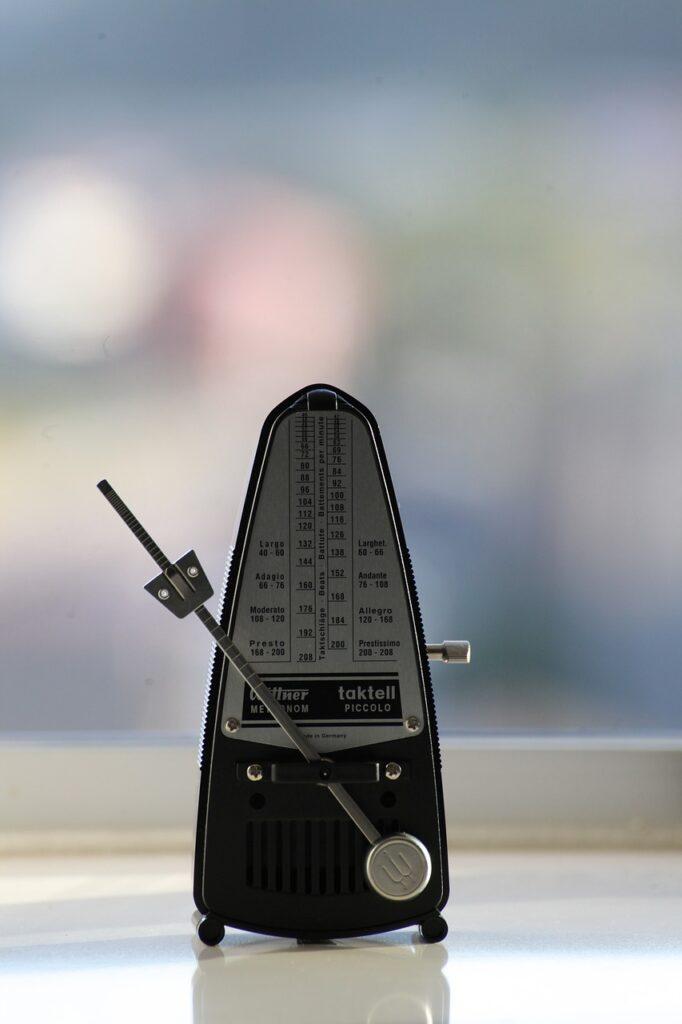How do you get the right metronome music beat for a song? If you’re reading sheet music, you’ll find the tempo marks in the upper left corner on the first page of a score:
- Presto (170-200 bpm)
- Allegro (120-170 bpm)
- Moderato (100-120 bpm)
- Andante (75-100 bpm)
- Adagio (60-75 bpm)
- Largo (40-60 bpm)
So, for example, you’d match the allegro tempo mark in the score with one of the allegro tempo metronome bpm marks.
- In the same location in the score, you’ll sometimes find a specific bpm indicated or even a bpm range. (See the picture below for an example.)
- What do you do if you’re trying to figure out the beats per minute of a song you’re listening to?
- Tap the pulse of the song until you can match it with a tempo on your device.
Alternately, you can use an online resource to find the song’s metronome music beat, such as:


